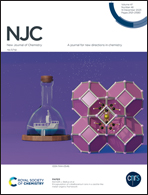Mesoporous and microporous carbons from one-pot hydrothermal products for supercapacitor electrodes: effects of porous structures and surface functionality†
Abstract
Mesoporous activated carbons (ACs) and microporous ACs are prepared through physical activation from one-pot hydrothermal product carbon dots (CDs) and hydro-chars, respectively. The CD-derived ACs exhibit a low surface area of ∼200 g m−2 but a high percentage of mesopores, while the hydrochar-derived ACs (ACSs) are typically microporous with a much higher surface area. Using different activation agents, the N and O components are introduced or adjusted. With symmetric supercapacitor (SC) cells, the mesoporous ACs exhibit superior electrochemical performances than the corresponding ACSs in both aqueous and organic electrolytes, although the surface area is much lower. Higher N contents benefit the electrochemical properties in both aqueous and organic systems. In comparison, the O component is only favored for the aqueous system. The ACs derived from CDs by ammonia exhibit an optimum specific capacitance of 175 F g−1 at 1 A g−1 with 74% capacitance retention at 40 A g−1 in an aqueous system and 153.84 F g−1 at 1 A g−1 with 60% capacitance retention at 40 A g−1 in an organic system. By defining a specific capacitance per surface area, the synergetic effects of porous structures and surface functionality are analyzed, which may help predict the theoretical capacitance of the ACs and design highly effective electrode materials.



 Please wait while we load your content...
Please wait while we load your content...